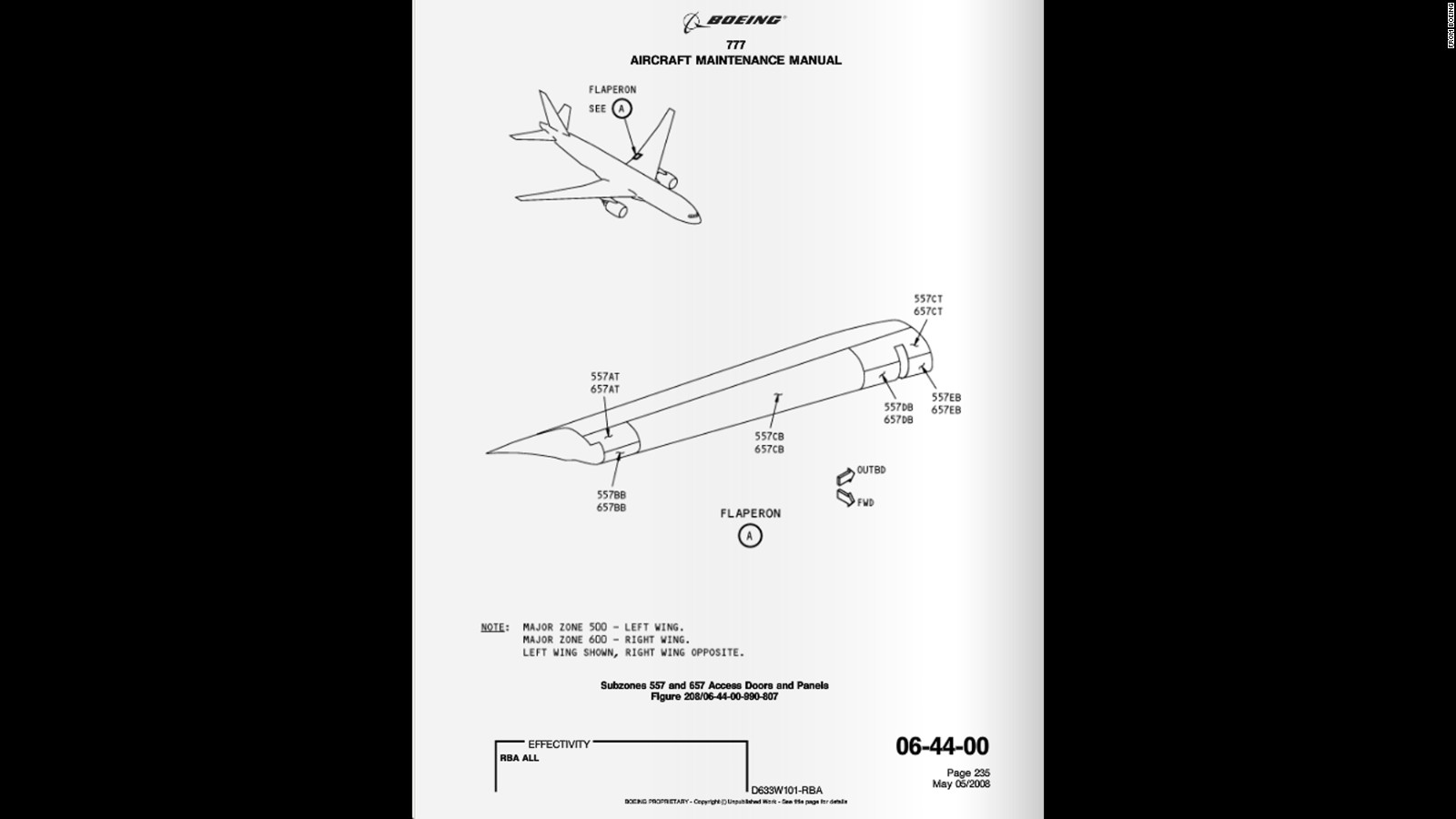 Falling rate: A moneychanger worker showing the ringgit and US dollar notes in Kuala Lumpur recently. The ringgit is still falling versus the greenback.
Falling rate: A moneychanger worker showing the ringgit and US dollar notes in Kuala Lumpur recently. The ringgit is still falling versus the greenback.Policy Matters - The riddled ringgit
CURRENCY traders are speculators. They make their money by taking bets; betting that this currency will rise, or that will fall.
Traders deal with the sentiments of the moment. They place their bets on the basis of expectations. They are quick to sniff weaknesses and take advantage of them.
The Malaysian ringgit has been vulnerable in the hands of traders. Not that traders are evil people. This is just how capitalism works.
Buying and selling from minute to minute, based on breaking news, even rumours, foreign exchange strategists do not ponder over fundamentals and the long-term equilibrium value of a currency when short-term pressures are overwhelming.
With allegations of financial impropriety running wild, there is nothing juicier that traders can chew on.
Bank Negara Malaysia, the one organisation that would know about the movement of huge sums of money, has been aloof. As waves of rumours and allegations rise and crash, silence does not do anything to quell speculation.
Then, there have been recent political developments: the deputy prime minister, other ministers and the attorney-general were dropped.
The prime minister has had to roll up his pants and walk into the rising tide. Any attempt to induce calm can, at times, induce more speculation.
Again, a field day for speculators.
The outlook is not very promising for much of the year.
A declining ringgit would make exports cheaper while raising the cost of imports. In the short run, theory indicates that the trade balance would decline.
With the passage of time, again as theory suggests, the volume of exports might increase. At this point the value of the ringgit would rise.
Until such time as the ringgit floats back to its equilibrium level, the declining ringgit will not do a lot of good.
A declining ringgit would make the consumption of imported goods from machinery and equipment to chocolates more expensive. This would lead to a decrease in household consumption of foreign goods and services, and it would also reduce investment in capital. The latter would not be beneficial because it would affect future production.
Should there be an interest rate hike in the United States in September BNM might find it necessary to respond with a hike in Malaysia. This might stem some of the capital outflow, but it would also act as a dampener on domestic investment.
The declining ringgit would drive the central bank to prop up the ringgit, as it perhaps already has. This has led to the decrease in international reserves. Malaysia has had more than adequate reserves, so a run-down on reserves will not be damaging.
It would be problematic to see the ringgit slip after the sell-off of reserves. That would mean wasting resources only to see a short-lived support of the ringgit.
Another worrying factor is the impact of the fall in the ringgit on Malaysia's foreign debt. A weaker ringgit would mean a higher cost in debt servicing.
International rating agencies are known to look unkindly at declining international reserves and exchange rate weaknesses.
Hence, a deeper concern might be a downgrade in Malaysia's credit rating. It would be a pity if Malaysia were to be slapped with a downgrade because the government has gone to great lengths to convince international agencies of our credit worthiness.
Although the outlook is not particularly bright, all is not out of our hands.
First, confidence must be restored in our economy. In particular, companies must be given the support they need to wade through the difficulties they face.
Second, the domestic political risk factors have to be better managed.
Third, although there is not much room for expansionary fiscal policies, it may need to be used to counterbalance an economy that is faced with a slump in confidence and enthusiasm. Stakeholders must be reminded that the country's development plans are on track.
Fourth, it is necessary to convince stakeholders that the central bank can act appropriately should the ringgit continue to face strong pressures.
Trying to save the day by persuading agents not to sell the ringgit has a flat timbre to it, at least under current conditions.
Fifth, initiatives must be taken to push ahead with good institutions and governance structures. This is in keeping with the government's overall programme, and it is now most opportune to stress the commitment to this objective.
The Malaysian economy has weathered many a crisis. The challenges that present themselves now are not trivial, but they are surely surmountable.
By Shankaran Nambiar
Dr Shankaran Nambiar is author of The Malaysian Economy: Rethinking Policies and Purposes. The views expressed in this article are his own. Comments: letters@thesundaily.com
Ringgit to ease further against US dollar next week
KUALA LUMPUR: The ringgit is expected to depreciate further against the US dollar next week, as falling commodity prices coupled with domestic political development will hurt investor confidence further, a dealer said.
The dealer said consistent talks over a possible US interest rates hike next month has prolonged the greenback's strength, with most emerging Asian currencies succumbing to selling pressure including the ringgit.
Last Thursday, the ringgit breached 3.9000 against the dollar for the first time since the Asian financial crisis 17 years ago, amid political tensions. The local note was pegged at 3.80 per dollar from 1998 to 2005 during the Asian financial crisis by the then Prime Minister Tun Dr Mahathir Mohamad.
Capital Advisors Currency Trader, Justin Herling, told Bernama that other factors such as declining oil prices and China's struggling economy had largely contributed to the depreciation of the ringgit.
He predicted the ringgit to further depreciate to 4.05 over the next 30 days.
"However we see this as a short-term correction but in the long term fundamentals still remain strong," he added.
For the week just ended, the ringgit traded lower against the US dollar at 3.9220/9250 from 3.8230/8260 recorded last Friday.
The local currency also fell against the Singapore dollar to 2.8291/8317 from 2.7775/7799 last Friday and weakened against the yen to 3.1429/1458 from 3.0771/0800 previously.
It declined against the pound sterling to 6.0881/0943 from 5.9509/9563 last week and was easier against the euro at 4.2836/2885 from 4.1816/1860 previously. – Bernama
Getting into the ringgit engine room
The depreciating ringgit has caught the imagination of most people on the streets. Beginning this week, we are featuring a special column on the mechanics of the currency and the forces that dictates its movements.Armed with two decades of experience as an interest rate and foreign exchange strategist in various financial institutions, Suresh Ramanathan will be looking into the intricacies of currency markets. With a Doctorate in Economics from Universiti Malaya, Suresh specialises in Modelling of Interest Rate Swaps, Foreign Exchange Forwards and Monetary Policy Signalling.Voted as Asia’s best foreign exchange strategist last year by AsiaMoney, he remains intrigued and fascinated by the workings of financial markets.
JUST how much is a currency worth? Exactly what the last buyer was willing to pay for it. That is the short answer. The longer answer is complicated.
In Malaysia’s foreign exchange (forex) markets, figuring out what a currency is worth is suddenly urgent. Trading is erratic, bid and offer spreads are wide and volume is thin as the market adapts to currency volatility. Determining the fair value of a currency is not an easy task either, disagreements between economists on what the fair value is or how it is measured becomes a banter at coffee bars and rigorous in academia. While the simple approach in analysing recent currency weakness is taking a top-down approach – meaning looking into macro-economic issues, followed by external and internal factors – affecting the economy.
But in the current environment, it may not suffice. Expectations of currency depreciating is built over a period of time until it reaches a breaking point.
The breaking point for ringgit is when the rest of the macro economic variables such as economic growth, inflation and trade balances are impacted.
The big question being where exactly is the breaking point for the ringgit? For the ringgit, a factor that stands out, is the arbitrage-speculative mechanism in the forex forward market.
A forex forward contract is an agreement between two parties to buy or sell currency at a specified future time at a price agreed upon today. It is available in all banks and used primarily for exporters and importers as a hedging instrument. The forex forward market has two features – one being a deliverable forward contract traded in the domestic market and settled in ringgit.
The other feature being a non-deliverable forward (NDF) contract that is settled in US dollar and traded offshore. Generally the NDFs are traded in financial centres such as Singapore, London and New York.
The mechanism of how a NDF trade and settlement works is based on the tenure of the contract followed by the fixing rate. The tenure can range from one month to a year or more and the price is fixed at the time the trade is entered into between two parties.
The trade, fixing and settlement dates are crucial since the period between the inception of the trade and the fixing can decide the profit and loss of a non-deliverable trade.
The fixing of the ringgit against the US dollar is currently done onshore through a spot fixing mechanism monitored by Bank Negara. The mechanism of fixing the rate onshore or in the domestic market removes certain elements of arbitrage and speculation.
But it does not prevent traders from taking a position in the offshore market by going into an agreement to buy or sell NDFs. It provides an arbitrage opportunity. In simple terms, the difference between the spot rate that is fixed in the domestic market and the offshore rate indicated by the MYR NDF provides an arbitrage opportunity for traders.
The second channel of arbitrage – speculation involves yield when one buys or sell a currency contract in the forward market. Between the period of inception of the trade and the fixing date, the MYR NDF yield can move either way. It is here where banks profit the trade, via using the implied NDF yield arbitrage versus the onshore forward yield.
This spread has been the lynchpin of trading mechanism for currency markets, particularly for emerging market currencies that are not convertible in the international market and not allowed to trade offshore. This is a legacy that was left behind from the Asian financial crisis of 1997/98 when Malaysia imposed capital controls and ringgit no longer became an international tender.
In the current trading environment of ringgit, spreads on the implied yield between onshore and offshore forward markets have persistently stayed above 1%, since the third quarter of 2014. An implied yield spread of more than 1% between onshore and offshore forward market indicates weakness of the ringgit against the US dollar.
This provides an avenue for markets to exploit the difference in yield, particularly for financial institutions that have access to both the onshore and offshore foreign exchange forward market. As the arbitrage window gradually closes and the spread between offshore and onshore implied yield from the foreign exchange forward narrows, the impetus for the ringgit to weaken further slows in pace, and it is here the risk of the currency swinging to the firm side picks up momentum.
By SURESH RAMANATHAN
The difference between now and 1998
THE ringgit is falling and so is the stock market. Contagion worries are building.
That scenario is a reality for Malaysian capital markets and the anxiety over a slowdown in China’s economy has got many worried about its effect on economic momentum in Malaysia.
Parallels from such a situation today can be drawn against what happened during the Asian Financial Crisis of 1997/98 but the setting is different than what happened almost 20 years ago.
Going back to 1997/98, it was a time when growth in Malaysia and South-East Asia was booming. Overheating worries turned into whether such growth was sustainable.
Starting with the attack on the Thai baht, the currencies of many South-East Asian countries were soon under attack.
The ringgit too felt the brunt of such attacks and at the worst, fell to RM4.80 to the dollar before recovering and ultimately pegged at RM3.80 to the dollar in September 1998.
“In 1997/98, it was contagion that caused problems. The currency crisis turned into a financial crisis,” says independent economist Lee Heng Guie.
The reasons for the fall in the ringgit this time is different.
The value of the ringgit was for some time after the peg was removed linked with the price of crude oil. As the price of crude oil rose, so the ringgit.
But as the price of crude oil collapsed like it has now, the ringgit felt the brunt. Political uncertainties in Malaysia is not helping the value of the ringgit.
The price of West Texas Intermediate is now at US$44.81 a barrel
The danger is what will happen to the real economy as the ringgit weakens?
The external trade sector will do well as seen in June’s export numbers. The steep decline of the ringgit in June lifted external trade by 5.0% year-on-year to RM64.3bil. “In part, the weak ringgit currency spurred exports growth during the month. Ringgit fell to an average of RM3.74 per US dollar in June versus RM3.60 in May. Exports growth were driven by most export products except the exports of petroleum including crude petroleum, LNG and petroleum products. Primarily, the exports of E&E surged by 13.5% following two months of contractions,” says AmResearch in a note.
Although there are similarities in the movement of the ringgit between 1997/98 and today, the stark contrast was economic strength.
In 1997 Malaysia had a current account deficit and a fiscal surplus. That situation reversed a year later and has been so ever since. The ringgit peg at RM3.80 afforded stability to exporters and that swelled the trade account in 1998. A fiscal deficit was realised after the Government embarked on priming, with the aid of lower government debt than today, to kickstart the economy which had been ravaged by a steep decline in economic activity.
One of the reasons why businesses found it hard going in 1998 was corporate leverage. A number of corporations were saddled with big debts and institutions such as Danaharta Nasional Bhd was formed to restructure corporate debt in Malaysia.
Conditions are reversed for most of corporate Malaysia today. Leverage has been kept in check and cash balances among corporates are in a far healthier state than it was in 1997/98.
The difference was also foreign reserves. From a high of US$34.6bil in May 1994, foreign reserves dropped to a low of US$17.5bil in 1997. Foreign reserves in Malaysia was US$96.7bil as at July 31.
Although the quantum of foreign reserves compared with the size of the economy is a comparative consideration, economists point out that the amount of reserves today is sufficient for nearly 7.6 months of imports. Back then, it was enough for just 3.2 months of imports.
“We have come a long way from the past. The banking system is well capitalised compared with back then,” says AmResearch economist Patricia Oh Swee Ling.
The biggest difference between 1997/98 and today are households.
During the Asian financial crisis almost two decades ago, household debt as a percentage of GDP was a meagre 16%.
At the end of last year, it was 87.9% and remains at an elevated level. The man in the street was generally immune to the crisis although there was an uptick in unemployment and higher loan repayments for loans as interest rates spiked.
While per capita income today is in excess of RM35,000 compared with RM12,314 in 1998, cost pressures have emerged. The goods and services tax (GST) has crimped spending power among consumers and retail sales, according to the Malaysia Retailers Association, contracted by 3% in the second quarter compared with a rise of 4.6% in the first quarter of 2015.
Purchasers by consumers has been a big factor in the growth of the economy and if private consumption, which accounts for 50% of GDP according to an economist, falls, then that will put pressure on economic growth in the second quarter.
Economic weakness ahead
Bank Negara will release second quarter GDP numbers next week and the general consensus is it will be lower than the first quarter. The consensus is for a growth of 4.5% for the second quarter.
Citigroup, in a note, projects second quarter GDP to come in at 4% compared with 5.6% in the first quarter.
“Services were dragged down by a 11.2% year-on-year plunge in motor vehicle sales post GST, while transport and utilities were also soft. Loan growth was stable, though fund raising in capital markets lifted financial services growth,” it says.
Citigroup says growth in mining slowed to below 8% from a year ago in the second quarter on weaker production volumes in gas and oil.
“Manufacturing also slowed below 5% year-on-year on softer April-May electrical and electronic production, although rebounding in June to 7.1% year-on-year. Growth was likely cushioned by a turnaround in palm oil production and strong construction.
“From an expenditure perspective, the slowdown in second quarter GDP growth was likely led by domestic demand, especially consumption. We remain cautious on third quarter prospects given continued slump in the Composite Leading Indicator, second half growth should be cushioned by base effects, a gradual recovery from the GST induced slump, and a lift to manufactured exports from a US recovery,” it says.
Affin Hwang Capital believes that despite households adjusting to the GST following its implementation in early April, it believes private consumption will remain supportive of economic growth in the second half, supported by favourable labour market conditions on the back of steady increase in income and low unemployment rate in the country.
“Malaysia’s real GDP growth is expected to slow from 5.6% y-o-y in the first quarter to an estimated 4.5% in the second quarter, before recovering to an average of 5% y-o-y in the second half. We highlighted that our full year 2015 GDP forecast remained unchanged at 5% in 2015, at the mid-point of the official forecast of between 4.5% and 5.5% (6% in 2014).”
Moody’s Investors Service was more optimistic. It expects Malaysia’s economy to grow by 5.1% in the second quarter.
“Exports are the main drag, driven by soft global demand and low oil prices. This filters through to the domestic economy as unemployment rises and consumers reduce spending. Capital expenditure should remain buoyant as government infrastructure projects come on line.
Malaysia’s economy should pick up later this year as the global economy strengthens,” it says.
By JAGDEV SINGH SIDHU The Star/Asia News Network
Slide continues despite efforts to arrest fall
THE ringgit slide continues despite aggressive attempts by the central bank to shore up the beleaguered currency.
Bank Negara said yesterday the country’s international reserves fell to US$96.7bil as at end of July, down US$8.8bil from a month ago. It came from a high of US$140bil in 2013.
Analysts said the recent sharp fall in reserves indicated that Bank Negara had step up its intervention in the currency market.
The ringgit had been under tremendous pressure in recent months as the outflow of funds continued unabated.
Bank Negara said foreign investors cut their holdings of Malaysian bonds by 2.4% to RM206.8bil in July. This is the lowest level of foreign holding in the Malaysian bond market since August 2012.
The outflow from the bond market coincided with the sell-off seen in the stock market.
MIDF Research earlier this week said global investors had pulled out an estimated RM11.9bil from Bursa Malaysia as of end of July.
This added to the RM6.9bil that left the stock market last year.
The rush to exit by foreign investors was a major force behind the ringgit’s sharp decline year-to-date. The local currency exchange rate against the US dollar hit 3.93 yesterday, which is a new 17-year low.
That put the ringgit down 11% year-to-date and made it Asia’s worst performing currency so far this year. To some, the currency’s recent plunge evokes an eerie reminder of past financial crisis.
The ringgit was fixed at 3.80 against the US dollar in September 1998, at the height of the Asian financial crisis. The currency peg was removed in July 2005.
Ten years down the road, the ringgit is again under pressure. And so are other currencies across the region as global investors adjust to the prospect of tighter monetary policy in the US.
In Indonesia, the rupiah was down 8.5% against the US dollar, while its stock market declined 8.7%.
Capital Economics, an independent macro-economic research firm said the biggest threat to Malaysia is slump of its currency and lower commodity prices that is hurting exports.
“With the exception of Malaysia, where US dollar debt is high, currency weaknesss is not a major threat to the region,” it said.
State owned Petroliam Nasional Bhd (Petronas) sold US$5bil of US dollar denominated bonds in March, while Tenaga Nasional Bhd recently said about 6% of its RM24bil debts are in US currency.
Others like 1Malaysia Development Bhd (1MDB) also have a significant portion of its RM42bil debts in foreign denominated currency.
Malaysia has also been hit hard by the fall in global commodity prices. The country is a net exporter of crude oil, liquefied natural gas and is ranked among the largest exporters of rubber and palm oil
For the first six months, exports declined 3.1% from a year ago, largely due to lower prices of commodities.
Next week will be a busy one for the market as the Government is scheduled to release the country’s factory output figures on Monday followed by gross domestic product (GDP) for the second quarter on Thursday.
The country’s economic performance and its outlook by the central bank should provide some bearing for the ringgit, which some analysts, including those at CIMB Research expect to touch RM4 against the US dollar by the end of the year.
By IZWAN IDRIS The Star/Asia News Network
Related posts:
 PETALING JAYA: The ringgit has fallen to its lowest against the US dollar since August 2009 amid concerns over the impact of low oil prices on Malaysia's economy and the timing of US interest rate hike. At 5pm yesterday, the ...
PETALING JAYA: The ringgit has fallen to its lowest against the US dollar since August 2009 amid concerns over the impact of low oil prices on Malaysia's economy and the timing of US interest rate hike. At 5pm yesterday, the ...














